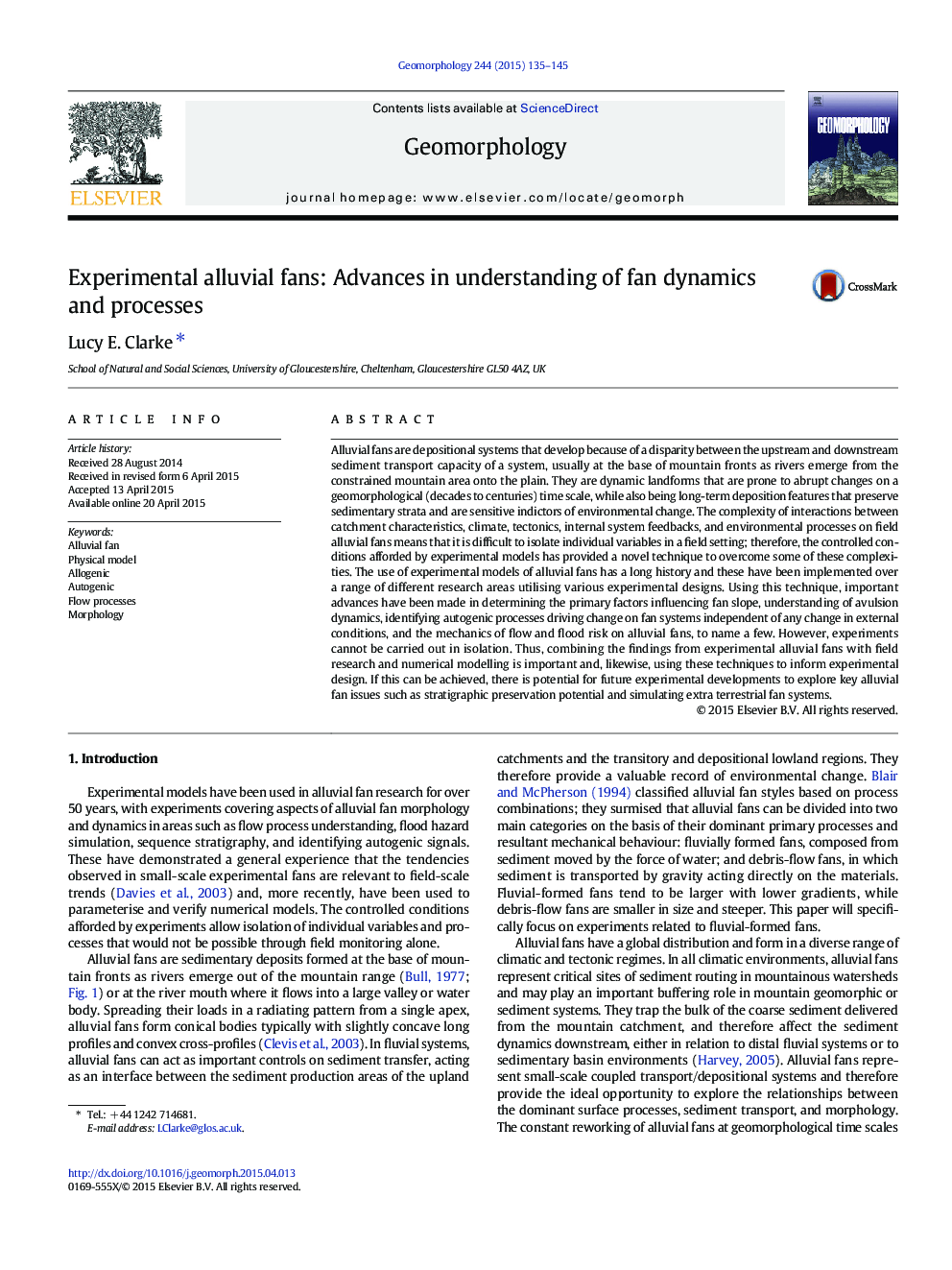| Article ID | Journal | Published Year | Pages | File Type |
|---|---|---|---|---|
| 4684185 | Geomorphology | 2015 | 11 Pages |
•A review paper examining the role of experimental modelling in alluvial fan research•Long history of using experimental alluvial fans to verify fundamental theory•Experimental fans have improved the understanding of flow processes, avulsion mechanics and autogenic forcing•Potential to use experiments for improved understanding of stratigraphic preservation and extra-terrestrial fans
Alluvial fans are depositional systems that develop because of a disparity between the upstream and downstream sediment transport capacity of a system, usually at the base of mountain fronts as rivers emerge from the constrained mountain area onto the plain. They are dynamic landforms that are prone to abrupt changes on a geomorphological (decades to centuries) time scale, while also being long-term deposition features that preserve sedimentary strata and are sensitive indictors of environmental change. The complexity of interactions between catchment characteristics, climate, tectonics, internal system feedbacks, and environmental processes on field alluvial fans means that it is difficult to isolate individual variables in a field setting; therefore, the controlled conditions afforded by experimental models has provided a novel technique to overcome some of these complexities. The use of experimental models of alluvial fans has a long history and these have been implemented over a range of different research areas utilising various experimental designs. Using this technique, important advances have been made in determining the primary factors influencing fan slope, understanding of avulsion dynamics, identifying autogenic processes driving change on fan systems independent of any change in external conditions, and the mechanics of flow and flood risk on alluvial fans, to name a few. However, experiments cannot be carried out in isolation. Thus, combining the findings from experimental alluvial fans with field research and numerical modelling is important and, likewise, using these techniques to inform experimental design. If this can be achieved, there is potential for future experimental developments to explore key alluvial fan issues such as stratigraphic preservation potential and simulating extra terrestrial fan systems.
